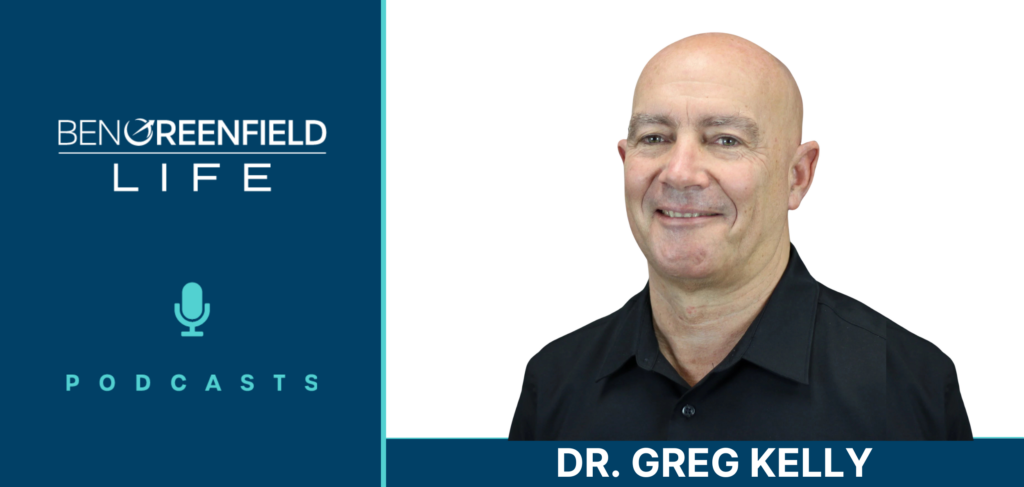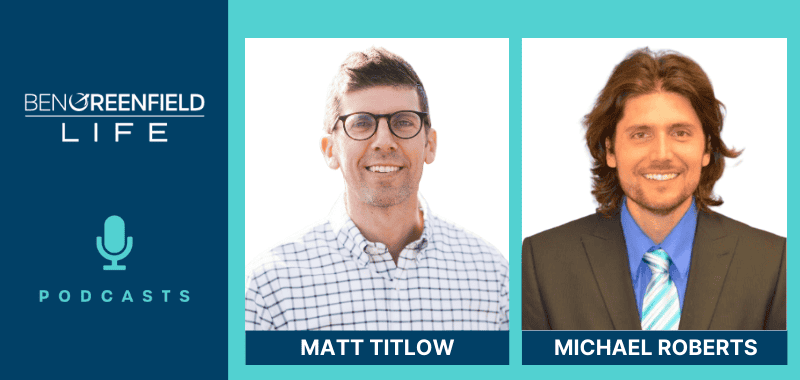January 8, 2019
A few months ago, in the article “Eat Yourself Smart: 10 Foods That Can Destroy Your Brain & How To Fuel Your Brain With The Best Cognitive-Boosting Alternatives.“, I taught you how to support cognition and fix brain fog with diet.
But in today's article, I want to narrow in on two specific food groups I mentioned in that article that I've been studying up on recently. Especially in people who are already eating “healthy”, these two food groups can still present major issues such as frequent headaches, poor sleep, fuzzy thinking and much more.
So what are those food groups?
You're about to find out…
Brain-Busting Food Group #1: High Histamine-Containing Foods
Histamines are compounds released by mast cells, a type of white blood cell that tends to be elevated during inflammatory and allergic reactions as part of an immune response to stressors like cuts, scrapes and allergens. Once released, histamines dilate blood vessels and increase blood flow to the stressed area (such as your nasal cavities during allergy season), resulting in a state of inflammation.
Excessively high histamine levels can also cause brain fog and headaches, especially in those with histamine sensitivities. An inherited genetic condition called systemic mastocytosis, which can be aggravated by histamine-induced brain inflammation, is a mast cell disorder associated with psychiatric symptoms such as diminished attention and memory and proneness to anger, irritability and depression. While low levels of histamines are necessary for brain function, motor activity and healthy circadian rhythms, excessive levels cause parts of the brain to shut down in an inflammatory response, especially if you have mastocytosis.
In addition, mast cell activation syndrome (MCAS) is an immunological condition in which mast cells inappropriately and excessively release chemical mediators that can also result in histamine sensitivities. MCAS can be brought on by a leaky gut, an infection, and even excess levels of chronic stress. To diagnose MCAS, a physician will often test for plasma histamine and diamine oxidase, but these are considered unreliable as they fluctuate significantly. Better tests include N-methylhistamine, prostaglandin d2, heparin and tryptase, which can all indicate excess mast cell activity.
No discussion of mast cells and histamine would be complete without mentioning the work of Dr. Neil Nathan, who has an excellent book entitled “Toxic: Heal Your Body from Mold Toxicity, Lyme Disease, Multiple Chemical Sensitivities, and Chronic Environmental Illness,” which I feel is a must-read for anyone who suspects they have a histamine sensitivity, excess mast cell activation, mold (more details on that coming later in this article) or Lyme disease. For stabilizing mast cells, Dr. Nathan’s typical starting point is quercetin, taken as 500mg, 30 minutes before each meal and at bedtime. This is because unless a mast cell stabilizer such as quercetin is already in the body before you eat or drink, it's not going to work. Dr. Ben Lynch has also developed a suite of histamine-blocking and histamine-digesting enzymes, including diamine oxidase (DAO), which is the main enzyme responsible for the degradation of ingested histamine.
One way to combat excess histamine in the brain, especially if you are sensitive to histamines, is to avoid consumption of foods that contain high levels of histamines (although many practitioners feel this is unnecessary or ineffective, I personally know many folks who have eliminated headaches by simply eliminating certain foods), including:
- Fermented beverages such as wine, beer and kombucha. I personally limit myself to one such drink per day (yes, this means if you drink a giant kombucha with lunch, you may want to consider foregoing your nightly glass of wine).
- Fermented foods such as sauerkraut, vinegar, soy sauce, kefir and yogurt. I eat these foods but treat them more as condiments than as major components of my diet.
- Vinegar-soaked foods such as pickles and olives.
- Cured or smoked meats such as bacon, salami, hot dogs and smoked fish.
- Soured foods such as sour cream, sour milk and buttermilk.
- Dried fruit.
- Aged cheeses.
- Peanuts.
- Leftover food, especially more than a few days old (this is a good reason not to eat at a restaurant on a Sunday or Monday, which are typically the two days of the week when a restaurant serves the least fresh food).
Don’t get me wrong: I am not trying to completely rip the charcuterie platter out from your gaping maw. But if you have brain fog and headaches, you should consider the fact that one person’s superfood may be another person’s villain due to specific sensitivities, and you should consider reducing your intake of these products and instead consume foods with lower amounts of histamines, such as:
- Freshly cooked meat, fish and poultry (not smoked, cured or preserved).
- Eggs.
- Low-gluten grains such as amaranth, buckwheat, millet, quinoa, sorghum, teff and rice (brown, white and wild).
- Fresh fruits such as mango, pear, watermelon, apple, kiwi, cantaloupe and grapes.
- Fresh vegetables instead of canned or preserved vegetables.
- Extra virgin olive oil and coconut oil.
- Leafy herbs such as parsley and cilantro, along with herbal teas.
There is no single, conclusive way that doctors can diagnose histamine intolerance, but the best currently available test for discovering sensitivities is the Strategene analysis. An allergist or immunologist will often begin by testing you for food allergies and intolerances if they suspect you may have histamine intolerance and will often place you on a diet that eliminates high histamine sources to see if that relieves symptoms. Physicians can also request a blood test to check levels of DAO.
Although it tends to fly under the radar, many people are now discovering the benefits of limiting oxalates in their diet. Many of the symptoms of oxalate sensitivity can overlap with histamine sensitivity, and if the elimination of histamines does not relieve your issues, you may also want to consider limiting oxalates, which seems to provide relief from symptoms such as inflammatory conditions, autoimmune issues, mineral deficiency, and perhaps even autism. A physician can test you for elevated oxalic acid accompanied by elevated glyceric or glycolic acid, and this is usually a sign of hyperoxaluria. In addition, if oxalic acid is elevated without an elevation in glyceric or glycolic acid, it is often because of a candida overgrowth or an excessively high vitamin C intake. High oxalate foods to avoid if this is actually an issue for you include beer, beets, chocolate, coffee, spinach, nuts, tea, and soy.
A urinary organic acids (OAT) test from Great Plains Laboratory that shows elevated glyceric, glycolic, and oxalic acid can give a clue that you are oxalate sensitive, have high oxalates, or both. Several genes that can be looked at on a 23andme salivary genetic test, notably AGXT, GRPHR, and HOGA1, are all gene mutations that can indicate a tendency towards oxalate sensitivity or excess oxalates.
Brain-Busting Food Group #2: Moldy Foods
The word “mold” conjures images of gross, decaying corpses, old hamburger meat in your refrigerator or a nasty growth on your shower wall. Molds are collections of microorganisms that are decomposers of dead, organic material such as leaves, wood and plants.
The tiny spores and hair-like bodies of individual mold colonies are too small for us to see without a microscope but constantly float about in the air around us. Some of the most harmful components of certain molds are mycotoxins, toxic substances produced by organisms of the fungus kingdom that are capable of causing damage to the brain, along with disease and death, in both humans and animals.
High amounts of indoor mold exposure can alter blood flow to the brain, affect autonomic nerve function and brain waves and diminish concentration, attention, balance and memory. The presence of mold in houses can impair the cognitive development of young children, as well as cause hemorrhagic infarcts (areas of dead tissue caused by blocked veins) in both cerebral hemispheres and the cerebellum of the brain. People who suffer from toxic mold exposure can go from being a highly-efficient pattern-analyst to experiencing insomnia, anxiety, loss of appetite and confusion and being misdiagnosed with depression and even bipolar disorder.
You can have tests such as an ERMI (Environmental Relative Moldiness Index) performed by a licensed contractor to determine if your house has mold in it. But the primary source of exposure to mycotoxins isn’t household mold in nooks and crannies you haven’t cleaned in a few days: it’s your diet. Mycotoxins are so prolifically dispersed throughout global agriculture that they are virtually unavoidable in the average modern diet. If you’re among the approximate 25% of the population that possesses the immune response genes for human leukocyte antigens (HLA) that doesn’t allow you to properly remove biotoxins from you body, mold becomes an even bigger issue because it circulates systemically throughout your body and can result in a condition called Chronic Inflammatory Response Syndrome (CIRS). If this is the case, you not only need to become hypervigilant about what you eat but also the structures you go into, since up to 50% of buildings in the US alone are water-damaged buildings (WDB).
For testing for mold in your body, I recommend two laboratories, the Real Time Laboratory and the Great Plains Laboratory, which both offer urine microtoxin tests that identify the specific toxins and mold strains that you personally have. In addition, the symptoms of mold exposure and Lyme disease often overlap, so it can be useful to test for Lyme as well, preferably using a test called the IgeneX western blot. You can read even more about HLA and CIRS, along with testing for molds and mycotoxins, at SurvivingMold.com, and also in Dr. Neil Nathan’s book mentioned earlier in this article.
It is important not to confuse “moldy” with “fermented.” You are not necessarily exposed to mycotoxins if you eat fermented foods such as cheese, pickles, buttermilk, sour cream and smoked fish. Sure, when consumed in high amounts, these foods can place you at higher risk for mycotoxin exposure, but many people remove the eating of moldy foods from their diet and still get well just fine. What you instead need to be careful with instead are unfermented foods that are known to contain concentrated sources of mycotoxins. For example, commercially-grown corn is typically sprayed with heavy amounts of pesticides that can cause a mutation in fungi that colonize corn. The fungi grow in corn roots and pump toxins directly into the plant. Other common crops like barley, wheat, peanuts and even coffee can also be notoriously high in mycotoxins.
You may have heard that mold or mycotoxin levels may be lower in organic foods, but the fact is that the mycotoxin content of a given crop depends on a variety of factors. For example, the amount of the mycotoxin deoxynivalenol in a product can depend on tillage practice, weather conditions, locations and crop rotation. Indeed, while organic systems generally seem able to keep mycotoxin levels low, the available research doesn’t suggest whether or not going organic reduces your risk of consuming mycotoxins. It’s also important to know that candida almost always plays a role in mold sensitivities, and for candida, mold and even Lyme, you should be eating a low-carb, low-sugar diet, because carbohydrates, particularly sugar and fruit, feed candida and many other fungal species.
The good news is that research does indicate that you can minimize the impact mycotoxins have on your body by using antioxidants such as superoxide anion scavengers. A few practical examples are vitamin A, vitamin C, selenium and glutathione. Other strategies to eliminate mycotoxins include consuming binders such activated charcoal (which you will learn about below), sweating in a sauna and eating garlic or taking an allicin supplement (allicin is the active ingredient of garlic).
In case you're unfamiliar with what a binder is, here's how they work: binders latch on to chemicals and toxins, rendering them inactive and able to be excreted. They can act in the gut, the liver, the kidneys and even inside the cells.
Natural binders such as activated charcoal and clay have been used by both humans and animals for thousands of years to treat issues like gas, bloating, stomach pain, food poisoning, and intestinal cleansing. They support your ability to excrete toxins and enhance your natural detoxification systems. But there is no universal binder that has an equal affinity for all toxins such as bacteria, heavy metals or mold. The following is a list short list of binders that can be combined for a synergistic effect against any toxins:
- Activated Charcoal. In 1831, in a famous act performed in front of the French Academy of Medicine, a French physician consumed a lethal dose of the poison strychnine but suffered no deleterious effects because he also consumed charcoal at the same time. The clinical benefits of charcoal have been well researched since that time. Activated charcoal has been shown to effectively absorb pesticides, herbicides, mold toxins, endotoxins and more. It can also remove inflammatory molecules associated with a hyperactive immune response, such as interleukins and tumor necrosis factor.
- Bentonite Clay. The use of bentonite clay dates back to early populations in the Andes, who carried balls of clay to consume as protection against poisons and toxins. It is particularly good at absorbing aflatoxin, the mold toxin often found in peanuts, coffees and grains, and can also absorb pesticides and herbicides and the cyanotoxins found in lakes polluted by algal blooms. It also has antibacterial properties and a healing effect on the lining of the gut.
- Chitosan. Chitosan is created by enzymatic treatment of chitin, a component of the shellfish. In a book of medicine from the Ming Dynasty, it is written: “Break a crab shell, grind it, make a ball out of it and eat it to treat anything that swells or grows.” Chitosan promotes the growth of the good gut flora bifidobacterium and lactobacillus and can bind to bile salts that emulsify fat (meaning that it can reduce fat absorption from a high-fat meal). It also binds and removes the conjugated toxins present in bile salts, metals, polychlorinated biphenyls (PCBs), phthalates and bisphenol A (BPA). It has also been shown to have protective effects against mercury-induced genotoxicity.
- Silica. Silica, particularly when bound to thiolic metal-binding groups (which can be found in several supplements, including one made by Quicksilver Scientific), delivers insoluble thiol groups that bind and eliminate mercury and other heavy metals. The use of thiolated forms of silica dates back to the 1970s when this compound was used to address mercury poisoning in Iraq, performing even better than penicillamine, a common medical metal chelating agent at the time. It is especially helpful in cases of mercury toxicity.
- Aloe and Acacia Gum. Both aloe and acacia gum, when combined with the binders above, can ease the constipation that can often occur with the use of binders. Acacia gum contains water-soluble dietary fibers that can feed the friendly bifidobacterium and lactobacillus bacteria in the gut and also increase levels of butyrate, a short-chain fatty acid with anti-inflammatory effects that can also help to heal a leaky gut. The bifidobacteria that the acacia feeds can lower endotoxins, normalize gut function and reduce inflammation. Aloe vera has a soothing effect on the gut and has a long history of use for a variety of gastrointestinal disorders associated with inflammation, including peptic ulcers, gastritis, and inflammatory bowel disease.
Although many practitioners recommend high-dose methylation therapy for mold and mycotoxin exposure, I do not. This is because it is the mitochondria that recognize the presence of a toxin or infection due to a change in the electrical charge of the cell, and it is the mitochondria that then sets off an orchestrated series of events to protect the cell. This includes halting methylation to protect the cell. If the cell is intentionally shutting down methylation when you get sick to protect itself, it certainly doesn’t make sense to flood the body with a host of excess methyl groups.
In addition, if you have been significantly exposed to mold, there are certain healing steps that I recommend you take. The first is to address the limbic system, a group of structures in the brain that includes the amygdala, which is primarily responsible for how you process emotions. One of the signs that the limbic system is involved in a mold sensitivity or infection is severe anxiety, depression, despair, hopelessness, and depersonalization (feeling like you’re not yourself), along with energy, cognition, and pain. One of the best methods for re-stabilizing the limbic system is a program designed by Annie Hopper called Dynamic Neural Retraining. The vagus nerve also tends to become sympathetically overactive after exposure, and for this, there is a series of excellent exercises that have been developed by a body-worker named Stanley Rosenberg. They can be found in his book “Accessing the Healing Power of the Vagus Nerve.” At the back of the book, there is a series of then exercises that take about 10 minutes a day to perform. These exercises can “quiet” the vagus nerve and the connecting cranial nerves. In conjunction with these exercises, I also highly recommend a form of therapy called osteopathic craniosacral work. To learn more, Google “biodynamic osteopathy” and go to the website of an osteopath named James Jealous, who has a list of practitioners well-versed in a particular form of this therapy, which can be very effective for the vagus nerve.
You can test your body’s mycotoxin levels using either Real Time Labs or the Great Plains Mycotoxin tests. Other biomarker clusters that can indicate some level of mycotoxin buildup include high levels of antigliadin (AGA) antibodies, low vasoactive intestinal polypeptide (VIP), high cortisol, low vascular endothelial growth factor (VEGF), low melanocyte stimulating hormone (MSH), high TGF beta-1, high C4a, high anticardiolipin (ACLA) antibodies, low antidiuretic hormone (ADH), high matrix metallopeptidase 9 (MMP-9), and high leptin. You might also include consuming liposomal glutathione the week leading up to the test to make sure you get an accurate reading (I recommend the brand AlmsBio, which can also offer some amount of mitochondrial support via the antioxidants CoQ10 and PQQ).
You can also learn about mitigating mold in your personal environment in my article on how to detox a home here.
Summary
In summary, I am not saying that you need to completely remove histamines and mold from your diet. Heck, just last week I threw a party at my house and we had red wine (histamine alert!) and bleu-cheese-stuffed olives (mold alert!).
But if you do struggle with energy, sleep or cognitive issues, it can be prudent to not only limit such foods and pay attention to symptoms but to also consider the advice I've given in this article, including understanding that sometimes it goes beyond simple “food elimination” when it comes to truly fixing histamine and mold sensitivity in your body.
Do you have questions, thoughts or feedback for me about histamines or mold? Leave your comments below I will reply!














Hello, great article! I have CIRS and mold Illness. What protein powder is the best? Doc recommended purepaleo beef but I assume it’s high histamine. I’m at a loss. Because of this, I’m on a low mold, low histamine, low oxalate, low amylose diet.
Hi Ben is there a Diamine oxidase (DAO) supplement you recommend?
Ben please reply, thank you.
I use Diem Labs’ Histamine Digest.
Seeking health DAO
Hi, Ben! Thanks for amazing podcasts and resources! Is there a supplement you’d recommend if one is experiencing symptoms of histamine intolerance? Would it be harmful to go ahead and add Oregano oil & garlic, and beet celery drink you mention, in case SIBO is causing the histamine intolerance? Safe to drink bone broth? I am gf, mostly grain free, and eat vegetables and salads on a daily basis but have gained about 15-20 pounds in 3 years. I started eating avocados (and olives) on a regular basis 2 years ago after trying the Whole30. I heard your recent podcast with Gundry, and decided to go lectin free. While doing Gundry’s 3-day cleanse the past few days, I noticed a lot of bloating, especially after drinking his green smoothie with avocados in it. I started to connect the bloating to how I’ve been feeling feeling this past year—bloated and tired. In the past, bananas and tomatoes have made me feel sick/break out, and I once had an awful reaction to eggplants, but I never knew avocados could be in the same family. My face is a bit puffier than usual as well. I’m going to go off high any histamine foods, especially avocados, but is there a supplement that will help? I’m a teacher, so I’m not really in a place where I can get tests for Sibo / leaky gut. Thanks so much!! Very grateful for all of your resources.
Re: genetic testing and Stratagene, V5 of 23andme removed many of the histamine SNPs, such as the AOC1 SNPs which we find have tremendous value in cluing in on issues with histamine. V4 and older versions offer better insight when using products like Stratagene or Gene Food. There are other markers like IL-8 still present in V5, so it’s not a total loss, but the diamine oxidase SNPs were retired.
Great article. What are your thoughts about Kratom? I have read that it aids sleep ,relaxation, anxiety, rages, as well as in smaller doses increases mental focusing. I’ve also read it’s very controversial. Thoughts?
Hi Barbara ,
I have been dealing with the mold class Ochratoxin A for the better part of a year , i have also started taking Kratom since then . I can tell you that Kratom certainly does help with cognition and focus , energy , and definitely your mood , just be careful of the brands you choose since low quality brands contain many fillers that can cause side effects , you also want to be aware of the dose ( low dose is stimulating , higher dose is sedative ) as well as frequency , if you take it for to many days in a row you can develop slight withdraw symptoms and unwanted side effects like increased anxiety and depression .
Be careful with it – a friend had to have a liver transplant – she and her doctors agree her liver failure was because of kratom. No joke.
Combining niacin flushes with sauna therapy were amazing in my recovery from mold and mercury toxicity. During this time, my brain was strongly affected by histamines & caffeine. I’ve also felt pretty darn good on the NAD+ support with nicotinic riboside, but it makes sense as NAD+ is involved in just about every neurotransmitter detox pathway including histamine and catecholamines (COMT gene snps). I’ve also added B2 for support of FAD+ for the same reason. If I am flushing heavy, I will take S-adenosyl methionine (SAMe) with the niacin as it depletes you of some free methyl groups (COMT snps tend to have excess methyl groups, so you find the balance based on your unique snps. betaine TMG might help here too when doing heavy niacin, it all depends.
I was curious, does anyone known if nicotinamide riboside depletes you of free methyl groups the same as nicotonic acid?
Do you have a podcast? lol
Some evidence shows this can happen in those w/ MTHF polymorphism… Can be mitigated by supporting yourself with other methyl precursors, such as dark leafy greens, organ meats and magnesium.
I was wondering if the food protocol ( for mold ) would be any different for someone who is under-methylated vs over-methylated ? For example , an over-methylated person has lower blood histamine but requires more folate rich foods like leafy greens but and under-methylated person has higher blood histamine and needs more foods that require methionine like meats..
Thanks
http://www.mensahmedical.com/methylation-disorders/
what about gut health
Fermented foods such as sauerkraut, and yogurt are known good for gut health
https://www.ncbi.nlm.nih.gov/pmc/articles/PMC3904…
Ben, reply
Yes this is true… You can read more about it here: https://goo.gl/zsmfn3
what about gut health
Fermented foods such as sauerkraut, and yogurt are known good for gut health
https://www.ncbi.nlm.nih.gov/pmc/articles/PMC3904694/
Ben, reply
good job Ben
Thank you
Hi Rene- you need to follow Dr William Li who wrote the book eat and beat disease. Sauerkraut and yogurt are good for gut health. He has very god insight on gut health. Cheers!
I’ve suffered for over 40 years with migraines. It’s been a journey. I’ve gotten a lot of relief by taking magnesium glycinate or malate, doing food testing (delayed food testing-ELISA/ACT-Dr Russell Jaffe), avoiding foods that causes inflammation, all preseratives, nitrates, histamines, amines, going GF, dairy free, corn free, nightshades, detoxing the kidneys & liver, eating clean organic food, avoiding VOCs, & eliminating parasites (Microbe Formulas). Now, only if I’m exposed to one of those or severe stress will I have a migraine. It isn’t easy but it works better than any pill.
What about those vegan protein brands such as Quorn that use mycoprotein? Is that mouldy as well?
G’day Ben,
Great podcasts & articles, keep up the great work. My wife suffers chronic migraines, she probably experiences a migraine at least 20 days out of a month. She has tried so many things such as countless medications, therapies, she even has a set of electrodes installed along the spine in the upper region to emit a pulse at the onset of a migraine to nullify it, all unsuccessful. Currently she is adminerstering a self injection call Aimovig which is a new drug, so far no good. We feel like there is nothing that’s going to work.
Have you come across this before or would you have any suggestions?
You have been a huge help for me personally, I do triathlons and looking to doing a fourth Ironman. I have implemented some of your training protocols along with diet.
I thank you and look forward to any suggestions you may have.
I suffer from chronic migraine as well … I’d like to know any thoughts or recommendations.
I suggest having your wife visit an orthrotropic practicianer. He should be able to determine if cranial development is part of the migraine root cause.
My best,
Joan
I know Ben has used and talked about photobiomodulation or low level light therapy. Call the Clinic at BioflexLaser.com and talk to them about their treatments for brain trauma. My friend with migraines went there for treatments, came home with a rental unit to continue the sessions, and her migraines have been gone for several months. Best wishes